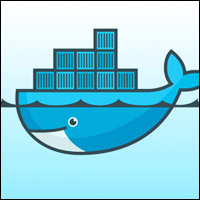The Open Source Development Labs (OSDL) has released a set of guidelines aimed at helping users deploy Linux in corporate data centers. Following a process that mirrors the open, ongoing development of Linux software, OSDL is inviting feedback on the Data Center Linux Technical Capabilities 1.0 specification. The document prioritizes Linux capabilities required by enterprise-class applications.
OSDL strategic marketing manager Lynn de la Torre told LinuxInsider that the document, already widely reviewed by OSDL members such as IBM, HP and Dell as well as other independent software vendors, is aimed at putting Linux software developers and sellers on the fast track to enterprise adoption.
“What we’re hoping to do in Data Center Linux is follow an open process as much as possible,” de la Torre said. “We’re not directing, but incorporating feedback as we go. We hope ISVs will respond and see that these are important areas to address. While we hope it’s a blueprint, we have no control over who picks it up.”
Linux Leg Up
The Data Center Linux technical guidelines, available for free on the ODSL’s Web site, defines more than 300 prioritized capabilities organized into several performance categories, including reliability, availability, scalability, manageability, clusters, standards, security and usability.
De la Torre described three “heavy-hitting items” that the OSDL hopes will accelerate Linux adoption in corporate data centers: expanded SanDisk support to increase beyond individual disks; eased ISV adoption of the Linux platform; and Java support “to make sure Java applications deployed on the Linux platform are competitive with other applications being deployed in the data center.”
De la Torre, who said the Technical Capabilities document already has been widely reviewed by ISVs and others, indicated the next step for the guidelines is a requirements or blueprint document that OSDL plans to publish after receiving additional feedback.
Coaxing Linux Configuration
Yankee Group senior analyst Dana Gardner told LinuxInsider that while Linux has made solid steps forward in technical capability and appropriateness for corporate data centers, the guidelines put forth by OSDL were needed.
“I think that part of the maturing process for Linux is not just technical, but the growing ecosystem of best practices and policies for data-center applications,” Gardner said.
The analyst added that Linux configuration can become quite complicated and requires expertise because there is little automation in setting it up.
“What’s needed for Linux to mature is either automation or — and this probably needs to come first — a set of easy-to-access and easy-to-act-on best practices,” Gardner said.
Open Process
OSDL’s de la Torre said that rather than setting the priorities and necessary steps for Linux adoption in data centers, the Technical Capabilities released this week are meant to spawn discussion of those priorities, which might change according to feedback from developers and vendors.
“It is like open-source software development in that it’s an open process,” she said. “It’s not a one-way arrow.
“It’s a bit of a new thing for us,” she added. “We’re not saying, ‘We’re done — here it is.’ We’re trying to say, ‘We’ve done it — what do you think?'”
Gardner said that while the addition of the practices-and-policy part of Linux deployment flies in the face of the business model that emerged with Linux — which does not require licensing fees or professional services — the Technical Capabilities do fit the emerging Linux business model of companies such as IBM, Oracle, Dell and HP, all of which are OSDL members with the exception of Oracle.
“There’s going to be a need along with new technologies for a more efficient model of how to get these things into place,” Gardner said.








































